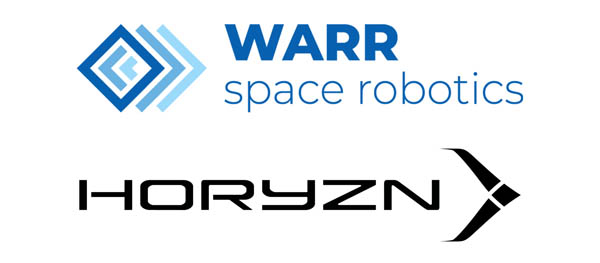
WARRYZN Space Robotics aims to compete at the ERC 2025. It is a team formed from two student initiatives at the Technical University of Munich (TUM).
WARR Space Robotics is an independent team within the Wissenschaftliche Arbeitsgemeinschaft für Raketentechnik und Raumfahrt (WARR e.V. – Scientific Workgroup for Rocketry and Spaceflight), the largest student group developing space technologies in all of Germany established in 1962. It is an interdisciplinary robotics project that is developing a rover and a space elevator. Formerly known as WARR Exploration, the team has participated in the 2018 and 2019 editions of the ERC. After the ERC 2019, the team pivoted its focus to create a proof-of-concept for a rover capable of automated in-situ construction in the context of ESA’s Moon Village. Its work was selected for the ESA_LAB@ Initiative IGLUNA 2021 as one of the 12 best student research projects in all of Europe. Currently, WARR Space Robotics is working on Project CRATER, which is short for Compact Rover for Autonomous Traversal, Experimentation, and Retrieval.
Since its inception, the team has created two rovers, with its third being in preparation for the ERC 2025. The first rover, the WARRthog, competed in the ERC 2019. The second rover, the Lunar Automated Rover for Solar Sintering (LARSS), combined solar sintering with a mobile rover platform into a novel powder bed fusion (PBF) 3D printing method which could be used for lunar construction. The third rover, the Martian Autonomous Rover for Experimentation and Exploration (MAREE), is currently in development and will serve as an autonomous test platform for research instruments.
HORYZN is a student initiative at the TUM with half a decade of experience designing, manufacturing, and testing eVTOL UAS (electrical vertical take-off and landing unmanned aerial systems). During this time, HORYZN has synthesized a wealth of experience in UAV design, flight testing, carbon fiber manufacturing, and autonomous flight. The evolution of the team’s drones can be seen in [figure @fig:drone-evolution]. The team initially participated in the German Neues-Fliegen silent eVTOL competition, developing the largest eVTOL aircraft at TUM. Until 2024, they were carrying out Mission Pulse, an ambitious project to develop a drone to deliver a defibrillator to a patient in a rural setting. In 2024, HORYZN unveiled their full-scale prototype, Kolibri, which is further
optimized for this medical use case. Currently, the team is developing a rapidly deployable emergency response eVTOL as part of the GoAERO competition. As WARR’s project partner, HORYZN is responsible for developing and deploying the aerial platform for the Droning Sub-Task.